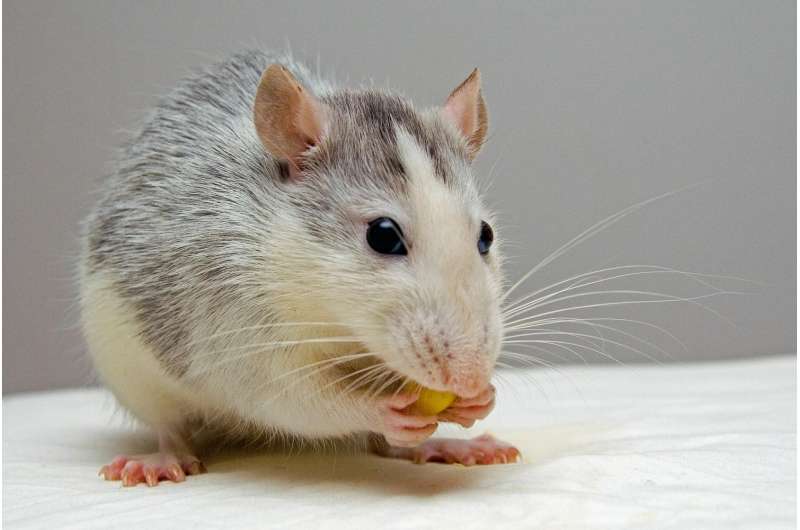Credit: CC0 Public Domain
A trio of researchers working at New York University Neuroscience Institute has recorded what appear to be bad dreams in the brains of rats as they sleep. In their paper published in the journal Nature Neuroscience, Gabrielle Girardeau, Ingrid Inema and György Buzsáki describe experiments they carried out with rats and what they found.
Bad dreams or nightmares, it has been noted, often happen to people after they experience something bad in real life, though the responsible mechanisms in the brain are still murky at best. To learn more about how they may work, the researchers conducted experiments with rats meant to conjure bad dreams and then monitored their brain activity to see what would happen.
The experiments consisted of teaching rats to traverse a maze and then giving them a bad experience along the way—a puff of air in the face from a keyboard cleaner. The researchers recorded brain activity for the rats throughout the experiments. They noted that both hippocampi became active during the times when the rats were engaged in learning how to traverse the maze. The team was even able to follow the sequence of neurons that fired as a given rat progressed through a maze after learning its way through. They found that when the rat was suddenly "scared" by the blast of air, the amygdalas both became active as well, which was not surprising—prior research has shown it is the part of the brain that becomes involved when processing emotional information.
The researchers continued to monitor the rat brains as they slept and report that they were able to follow along as a rat ran through a maze in its dreams—the same sequence of neurons fired as had done so while the rat was actually carrying out the activity in real life. Then, at the point in the sequence where the rat was blasted with the air, the amygdalas lit up once again, suggesting the rat was reliving the unpleasant experience in its dream—the dream had suddenly become a bad dream or a nightmare.
The researchers readily acknowledge that they really can't say what the rats are experiencing, but suggest their findings have opened the door for further research with people—and possibly a much better understanding of the processes involved in human nightmares.
More information: Gabrielle Girardeau et al. Reactivations of emotional memory in the hippocampus–amygdala system during sleep, Nature Neuroscience (2017). DOI: 10.1038/nn.4637
Abstract
The consolidation of context-dependent emotional memory requires communication between the hippocampus and the basolateral amygdala (BLA), but the mechanisms of this process are unknown. We recorded neuronal ensembles in the hippocampus and BLA while rats learned the location of an aversive air puff on a linear track, as well as during sleep before and after training. We found coordinated reactivations between the hippocampus and the BLA during non-REM sleep following training. These reactivations peaked during hippocampal sharp wave–ripples (SPW-Rs) and involved a subgroup of BLA cells positively modulated during hippocampal SPW-Rs. Notably, reactivation was stronger for the hippocampus–BLA correlation patterns representing the run direction that involved the air puff than for the 'safe' direction. These findings suggest that consolidation of contextual emotional memory occurs during ripple-reactivation of hippocampus–amygdala circuits.
Journal information: Nature Neuroscience
© 2017 Phys.org





















